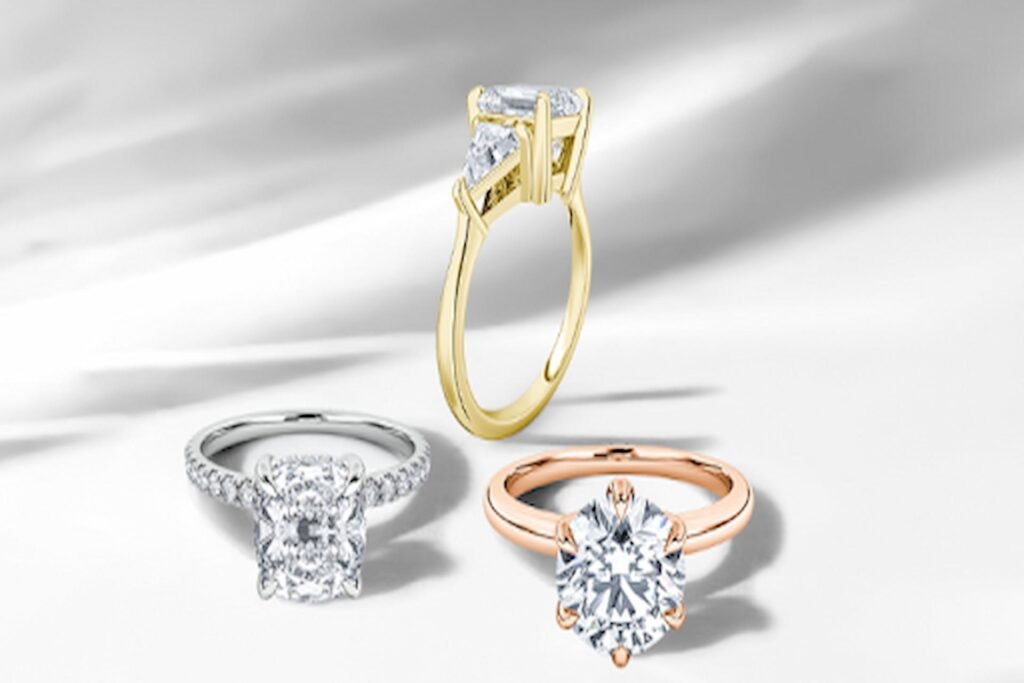The Evolution of British Engagement Rings in the 1800s

The 19th century saw a remarkable transformation in the styles, designs, and social significance of engagement rings in the UK. As the century unfolded, engagement rings UK gained a unique identity, marking a distinct shift from traditional betrothal tokens to elegant pieces that showcased both personal sentiment and societal change. The Industrial Revolution brought advancements in jewelry-making techniques, making engagement rings more accessible, while cultural influences and evolving tastes redefined British engagement rings in fascinating ways.
In the early 1800s, engagement rings in Britain were relatively simple, often crafted with plain gold bands or modest gemstones. Many couples exchanged rings with sentimental engravings, marking their promises of love and commitment. However, as the century progressed, new developments in gem-cutting and setting techniques brought more elaborate designs into fashion. The use of gemstones became increasingly popular, with sapphires, rubies, and pearls often taking center stage. Diamonds, though not yet as ubiquitous as they are today, were beginning to gain favor, especially among the wealthy elite.
One of the defining influences on British engagement rings during this period was Queen Victoria, whose own romantic love story with Prince Albert had a profound impact on fashion and jewelry trends of the era. When Victoria and Albert married in 1840, Victoria’s engagement ring was shaped as a serpent, a symbol of eternal love and wisdom. This design, with its intricately coiled snake motif and small diamonds, inspired countless similar styles among the British public. The queen’s visible affection for her husband and her fashionable tastes influenced Victorian society profoundly, making engagement rings and the idea of romantic courtship increasingly popular.
The middle to late 1800s saw the introduction of larger and more elaborate rings, as advances in mining and gem sourcing allowed for a wider selection of gemstones and cuts. The opening of diamond mines in South Africa in the 1870s made diamonds more accessible, slowly introducing the idea that diamonds could be symbols of love and prosperity. By the end of the century, diamond solitaire rings had emerged as a favored style among wealthier British couples. These solitaire designs, often featuring a single large diamond, set in intricate gold or silver bands, highlighted both craftsmanship and wealth.
Symbolism also played an essential role in engagement rings UK during the 1800s. Rings featuring acrostic messages—where the first letter of each gemstone spelled out words like “dearest” (diamond, emerald, amethyst, ruby, emerald, sapphire, topaz)—became highly fashionable. These “regard” and “dearest” rings allowed couples to communicate sentiments subtly, blending artful designs with hidden meanings that were significant to them alone. Rings that featured floral motifs, hearts, and other romantic symbols were also popular, appealing to Victorian ideals of sentimentality and beauty.
As the 19th century drew to a close, the tastes for engagement rings in the UK had evolved substantially. While simple designs remained accessible to the middle classes, those who could afford it leaned toward intricate and highly personalized rings that reflected the broader social shifts of the time. Engagement rings became not only a token of love but also a reflection of the wearer’s social status, personal tastes, and the cutting-edge craftsmanship that defined the late Victorian era.
The legacy of 19th-century British engagement rings remains influential in today’s designs. With each ring telling a unique story of love and commitment, the evolution of these designs in the 1800s paved the way for modern engagement rings UK, blending tradition with a timeless sense of romance and craftsmanship that continues to inspire.



